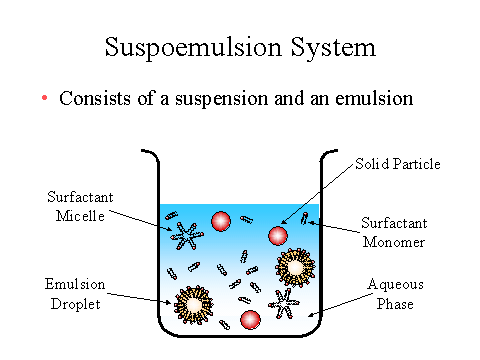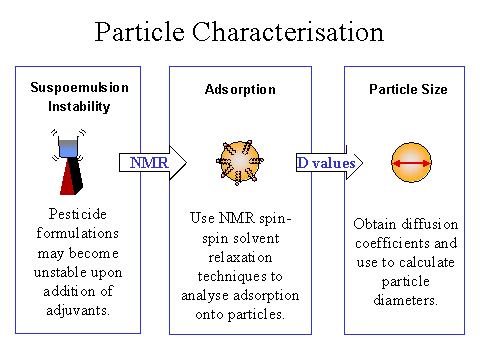Particle Characterisation Using NMR Diffusometry and Scattering Techniques

Chau Ping Chan (previous student, left the group in 2007)
Modern pesticides are complex mixtures, containing several components; the most important of which is the active ingredient (a.i.). There are several types of pesticide formulation currently in production. The most complex of which, is known as a 'suspoemulsion'. A suspoemulsion consists of solid particles or polymer capsules suspended in an emulsion system. This type of system provides the opportunity to have a formulation with multiple active ingredients which can be in a microcapsule, crystalline solid particle, or in the emulsion itself.

The optimisation of suspoemulsions can only be achieved by addressing destabilisation problems in the system such as heteroflocculation and emulsion coalescence. In such complex systems, it is steric stabilisation phenomena induced by polymeric non-ionic surfactants that are becoming increasingly important. However, classical polymeric non-ionic surfactants often desorb from the interface. Hence, in a suspoemulsion system, competitive displacement of the polymer can occur between the particles and the emulsion, leading to undesirable system instability and possible flocculation and coalescence.
Project Aims
The aim of my project is to study the adsorption and desorption of polymers in suspoemulsion systems. This can be achieved by monitoring the size of particles in the suspoemulsion. In particular the project will focus on the development of pulsed field gradient diffusion NMR (NMR diffusometry), allied with techniques such as photon correlation spectroscopy (PCS) and small-angle neutron scattering (SANS) as a means of particle characterisation.
